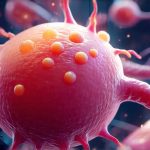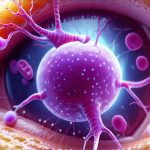Weight loss can feel like an incredibly frustrating battle, even when you’re diligently following a healthy diet and exercise routine. Many people assume willpower is the primary missing ingredient, but increasingly, science points to a different culprit: our gut microbiome. The trillions of bacteria, fungi, viruses, and other microorganisms residing in our digestive tract aren’t just passive bystanders; they actively influence metabolism, hormone regulation, inflammation levels, and even cravings – all factors deeply intertwined with weight management. When this complex ecosystem is out of balance, it can effectively sabotage your best efforts, making weight loss significantly harder to achieve and maintain.
Understanding the intricate relationship between gut health and weight isn’t about finding a quick fix; it’s about recognizing that true wellness starts from within. It’s about moving beyond restrictive diets and focusing on nourishing the diverse community of microbes that call your gut home. This article will explore the telltale signs that your gut flora might be working against you, providing insights into how to identify imbalances and potentially restore a healthier, more supportive internal environment. We’ll focus not on prescribing solutions but on understanding the indicators so you can make informed choices in consultation with healthcare professionals.
The Gut-Weight Connection: More Than Just Digestion
The connection between gut bacteria and weight isn’t simply about efficient digestion – although that is certainly part of it. It runs much deeper, impacting how our bodies process food, store fat, and respond to hunger signals. A diverse and balanced microbiome helps us extract the maximum nutritional value from our meals, while an imbalanced one can lead to malabsorption and nutrient deficiencies. Furthermore, certain gut bacteria produce short-chain fatty acids (SCFAs) like butyrate, propionate, and acetate when they ferment dietary fiber. These SCFAs aren’t just fuel for colon cells; they also play crucial roles in regulating appetite, improving insulin sensitivity, and reducing inflammation – all vital components of healthy weight management.
Conversely, an overgrowth of certain bacteria or a lack of diversity can promote chronic low-grade inflammation throughout the body. Inflammation is linked to insulin resistance, making it harder for your body to use glucose effectively, leading to increased fat storage. A disrupted microbiome can also impact the production of hormones like ghrelin (the hunger hormone) and leptin (the satiety hormone), throwing off your natural appetite regulation mechanisms and causing cravings for sugary or fatty foods. This creates a vicious cycle where you’re constantly battling both physical hunger and psychological cravings, making it incredibly difficult to stick to a healthy eating plan.
The microbiome’s influence extends even into our brains! The gut-brain axis is a bidirectional communication network that links the digestive system with the central nervous system. Gut bacteria produce neurotransmitters and other signaling molecules that can impact mood, stress levels, and cognitive function. Stress and emotional eating are common roadblocks to weight loss, and an imbalanced microbiome can exacerbate these issues, making it harder to stay on track. Essentially, a healthy gut isn’t just about physical health; it’s about mental and emotional wellbeing too. If you suspect your struggles might have deeper roots, looking into emotionally driven bloating could be a good starting point.
Recognizing the Signs: Digestive Distress & Beyond
One of the most obvious indicators that your gut flora might be unbalanced is digestive distress. This can manifest in numerous ways, ranging from mild discomfort to debilitating symptoms. – Bloating after meals – Excessive gas – Diarrhea or constipation (or alternating between both) – Abdominal pain or cramping – Heartburn and acid reflux are all potential red flags. While occasional digestive upset is normal, persistent or frequent issues should prompt investigation. It’s important to note that these symptoms can be caused by many factors, so they don’t automatically mean your gut flora is the problem; however, they warrant attention. You should also consider whether acid reflux might be worsening over time.
Beyond obvious digestive symptoms, more subtle signs can also indicate an imbalance. These include: – Fatigue and low energy levels, even with adequate sleep – often linked to nutrient malabsorption – Skin problems like eczema, acne, or psoriasis – a result of inflammation and impaired detoxification – Food intolerances that develop suddenly – indicating increased intestinal permeability (leaky gut) – A weakened immune system and frequent illnesses – as much of our immune function resides in the gut. These seemingly unrelated symptoms can be interconnected through the microbiome’s influence on various bodily systems. If you suspect a larger issue, it’s worth exploring if autoimmune disease could be a factor.
Finally, pay attention to your cravings. While everyone experiences cravings occasionally, intense and persistent cravings for sugary, fatty, or processed foods can be a sign that certain bacteria are dominating your gut and manipulating your brain’s reward system. These bacteria thrive on these types of foods, creating a self-perpetuating cycle of craving and consumption. Recognizing these subtle cues is the first step towards restoring balance. You might also want to consider if diet overstimulation could be fueling those cravings.
The Impact of Antibiotics & Dietary Habits
Antibiotics, while life-saving in many situations, can have a devastating impact on the gut microbiome. They don’t discriminate between beneficial and harmful bacteria; they wipe out everything in their path. This disruption can lead to a loss of microbial diversity and create an opportunity for opportunistic pathogens to flourish. Even a single course of antibiotics can alter the microbiome for months or even years, potentially leading to long-term health consequences. While you shouldn’t avoid necessary antibiotics, it’s crucial to support gut recovery afterward with probiotic-rich foods or supplements (under professional guidance).
Dietary habits play an equally significant role in shaping the microbiome. A diet high in processed foods, sugar, and unhealthy fats can feed harmful bacteria while starving beneficial ones. Conversely, a diet rich in fiber from fruits, vegetables, whole grains, and legumes provides nourishment for the good guys, promoting diversity and resilience. – Minimizing your intake of artificial sweeteners, emulsifiers, and other food additives is also important, as these compounds can disrupt the microbiome’s delicate balance.
Furthermore, chronic stress, lack of sleep, and exposure to environmental toxins (like pesticides) can all negatively impact gut health. These stressors weaken the immune system, increase inflammation, and disrupt the microbial ecosystem. Creating a holistic lifestyle that prioritizes stress management, quality sleep, and minimizing toxin exposure is essential for maintaining a healthy microbiome. It might also be beneficial to assess gut transit time if you’re experiencing consistent digestive issues.
Rebuilding Your Gut: A Gradual Approach
Restoring a balanced gut microbiome isn’t about taking a probiotic pill and hoping for the best; it’s about adopting a long-term strategy focused on nourishing your internal ecosystem. Start by incorporating more prebiotic foods into your diet. Prebiotics are essentially food for probiotics – they provide nourishment for the beneficial bacteria in your gut. Excellent sources include: – Garlic – Onions – Leeks – Asparagus – Bananas (slightly green) – Oats – Apples.
Next, consider incorporating fermented foods into your meals. These foods naturally contain live cultures of beneficial bacteria. Examples include: – Yogurt (unsweetened, with live and active cultures) – Kefir – Sauerkraut – Kimchi – Kombucha. Again, start slowly to avoid digestive upset. Remember that introducing too many fermented foods at once can cause temporary bloating or gas as your gut adjusts.
Finally, focus on diversifying your diet overall. Aim for a wide range of plant-based foods to provide a variety of nutrients and support microbial diversity. A colorful plate is often a sign of a healthy microbiome! Remember that making gradual changes is more sustainable than attempting drastic overhauls. And always consult with a healthcare professional before making significant dietary changes or starting any new supplements. If you feel your gut needs a complete overhaul, consider if a reset is right for you. This information is intended for educational purposes only, and should not be considered medical advice.


















